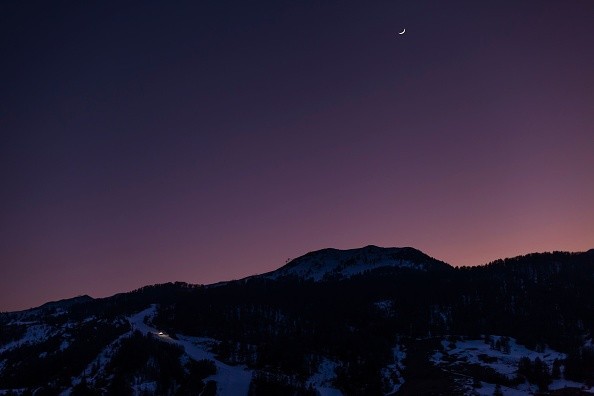Scientists can interpret a glimpse of Earth's future from the ancient muck of lakebeds on Asia's Tibetan Plateau.
That future, it turns out, will look a lot like the mid-Pliocene warm period, which lasted from 3.3 million to 3 million years ago and saw average air temperatures in the mid-latitudes seldom drop below freezing.
It was a time when permanent ice was only beginning to form in the northern polar areas, and mid-latitude alpine permafrost, or persistently frozen soil, was considerably scarcer than it is now.
Increasing release of greenhouse gases

Today, the world's permafrost stores a massive 1,500 trillion grams of carbon. That is twice as much as what is now stored in the atmosphere, per ScienceDaily.
Alpine permafrost, which is found at high elevations closer to the equator, is less extensively studied than arctic permafrost yet contains 85 trillion grams of carbon.
When melted, it may emit carbon dioxide and methane, both of which are greenhouse gases that impact world temperatures.
According to a recent study published in Nature Communications, under current global warming conditions, Alpine permafrost is expected to melt faster than arctic permafrost, perhaps contributing even more to rising global temperatures.
Because of the burning of fossil fuels, atmospheric carbon dioxide concentrations today are similar, if not higher, than in the mid-Pliocene, and scientists point to that time period as an analog for our current and near-future climate, according to paper co-author Carmala Garzione, dean of the University Of Arizona College Of Science.
Because our Earth system takes time to adjust, we aren't yet suffering the full consequences of the surge in atmospheric carbon dioxide.
The researchers employed carbonate, a mineral family generated in a Tibetan Plateau lake, to determine temperatures throughout the Pliocene (5.3 to 2.6 million years ago) and Pleistocene periods (between 2.6 million and 11,700 years ago).
When algae bloom in lakes, it releases carbon dioxide from the water, lowering lake acidity.
This decline causes the lake to generate fine-grained carbonate minerals, which settle at the lake's bottom. The atoms in that carbonate represent the temperatures at when it originated and may thus be used as a time-traveling thermometer.
The Tibetan plateau in the Pliocene period
The Tibetan Plateau, at an elevation of over 15,400 feet, is the world's largest alpine permafrost geographic area, but others can be found in central Asia's Mongolian Plateau, the Canadian and American Rocky Mountains, the southern stretches of the Andes, and other mountain ranges globally at altitudes where the ambient temperature is continuously below freezing.
They discovered that not only was the average temperature of most of the Tibetan Plateau above freezing throughout the Pliocene, but it was also true for many of the world's alpine areas.
According to Yahoo News, the modeling predicts that with present carbon dioxide levels in the atmosphere, 20 percent of arctic permafrost land area and 60 percent of alpine permafrost landmass will be destroyed in the future.
High-altitude alpine areas are more vulnerable to warming under increased CO2 levels in the atmosphere than high-latitude arctic regions.
The Pliocene is significant as an old precedent for how Earth will respond to the carbon dioxide that people have already injected into the atmosphere, according to Garzione.
© 2025 NatureWorldNews.com All rights reserved. Do not reproduce without permission.





